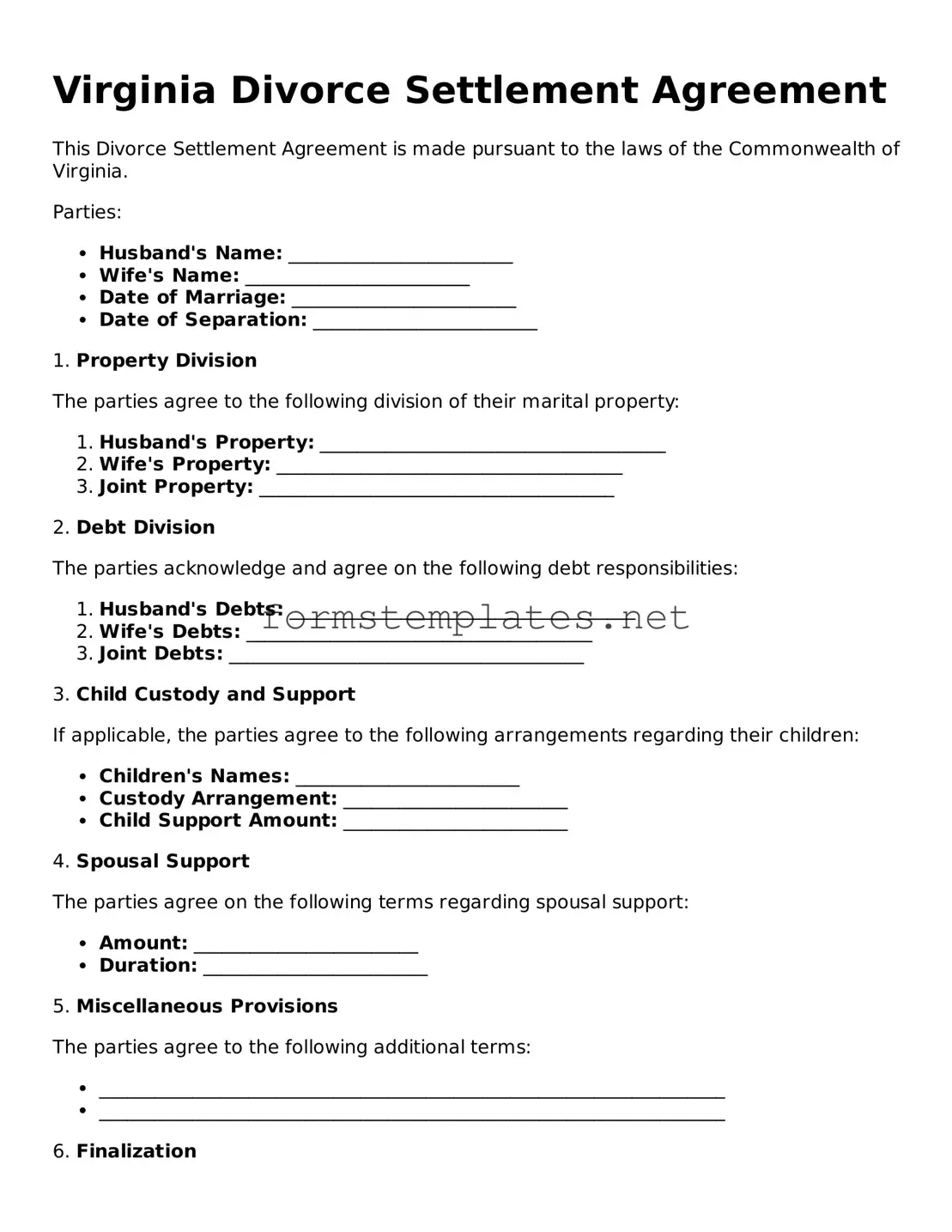Virginia Divorce Settlement Agreement
This Divorce Settlement Agreement is made pursuant to the laws of the Commonwealth of Virginia.
Parties:
- Husband's Name: ________________________
- Wife's Name: ________________________
- Date of Marriage: ________________________
- Date of Separation: ________________________
1. Property Division
The parties agree to the following division of their marital property:
- Husband's Property: _____________________________________
- Wife's Property: _____________________________________
- Joint Property: ______________________________________
2. Debt Division
The parties acknowledge and agree on the following debt responsibilities:
- Husband's Debts: _____________________________________
- Wife's Debts: _____________________________________
- Joint Debts: ______________________________________
3. Child Custody and Support
If applicable, the parties agree to the following arrangements regarding their children:
- Children's Names: ________________________
- Custody Arrangement: ________________________
- Child Support Amount: ________________________
4. Spousal Support
The parties agree on the following terms regarding spousal support:
- Amount: ________________________
- Duration: ________________________
5. Miscellaneous Provisions
The parties agree to the following additional terms:
- ___________________________________________________________________
- ___________________________________________________________________
6. Finalization
This agreement shall be submitted to the Court for approval. The parties affirm that they have voluntarily entered into this agreement without any undue influence or coercion.
Signatures:
- _________________________ (Husband)
- _________________________ (Wife)
Date: ________________________
